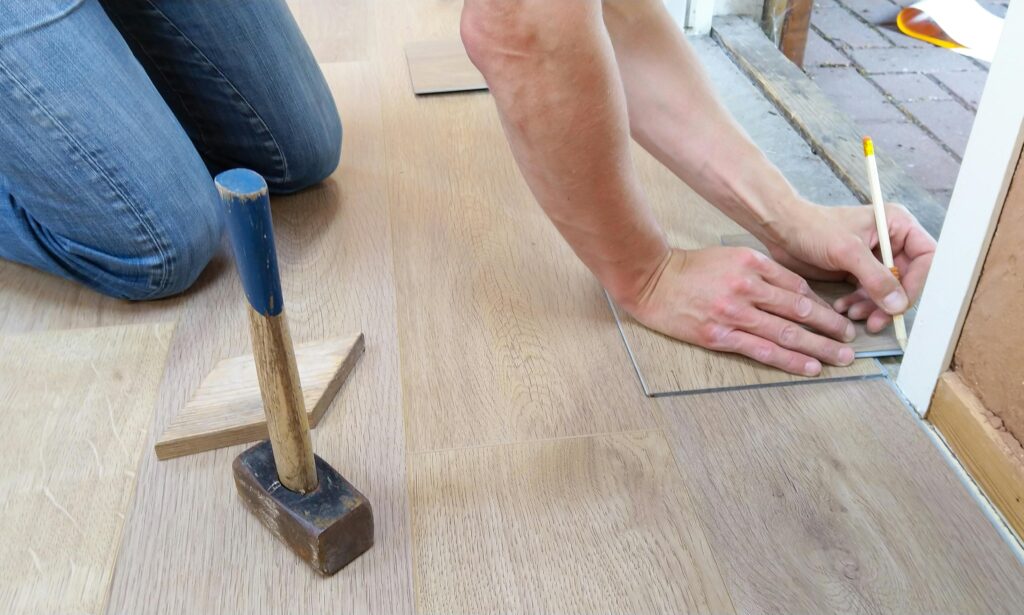Renovating a home can be an exciting journey, filled with the potential for transformation and improvement. However, it can come with unexpected costs that quickly accumulate, leading homeowners to overspend. To achieve your desired renovation results while sticking to a budget requires strategic planning and tactical decision-making. This article explores important strategies to help keep your renovation project within financial limits and ensure you get the best value for your investment.
Define a Realistic Budget
Before diving into home renovations, it’s important to outline a realistic budget that considers all aspects of the project. Start by assessing your current financial situation and determining how much you’re willing and able to spend. It’s helpful to list all potential renovation costs, from materials to labor and any unforeseen expenses.
The more detail you provide in your budget, the clearer your financial picture becomes. The team behind Really Cheap Floors says that many homeowners underestimate the costs involved in certain tasks, often forgetting to include items such as permits, design fees, and inspections. Doing thorough research on typical costs for similar renovations in your area can prevent you from overextending your financial resources.
Add a contingency fund, typically around 10 to 15 percent of the total budget, for those unexpected costs that may arise during a renovation.
Prioritize Your Renovation Goals
Not all renovation projects hold the same significance or return on investment. Prioritizing your goals will help you allocate your budget effectively. Start by listing the renovations that are most critical to your living space and satisfaction. These may include upgrading older electrical systems or remodeling the kitchen to improve functionality.
Once you establish priorities, evaluate which projects can be postponed or completed later. Many homeowners find that choosing to focus on high-impact renovations first allows them to enjoy the benefits while maintaining financial control. Additionally, prioritizing means being selective about the aesthetics and functionality of materials, which can lead to better cost management.
Carefully Choose Your Materials
Material selection plays a pivotal role in managing renovation costs. Opting for cost-effective materials without compromising quality can greatly affect your budget. Start by exploring alternative materials that provide the same look or functionality as high-end options but at a fraction of the cost. Use laminate flooring instead of hardwood, or choose quartz countertops instead of granite.
Researching local suppliers can yield unexpected savings. Many homeowners overlook the benefits of purchasing materials directly from local manufacturers, often leading to reduced shipping costs and better quality assurance. Always examine multiple quotes to ensure you’re getting competitive rates. The time invested in exploring material options can pay dividends in the final cost of your renovation.
Hire the Right Professionals
The experts you choose to hire can have a significant impact on your renovation budget. Select qualified professionals who offer competitive rates and demonstrate a strong track record of delivering quality work. Obtain multiple quotes to gauge the market and ensure you are making an informed decision. Don’t hesitate to ask for references to verify their past projects and client satisfaction.
Neglecting to research contractors can lead to overspending in the long run. Investing in professional assistance often results in greater cost efficiency since skilled experts can streamline the process and avoid costly mistakes. Ensure you understand the pricing structure, as some contractors offer fixed rates while others work on an hourly basis. Making the right hiring choice can ultimately result in a smoother renovation experience for your project.
Stay Involved and Monitor Progress
Keeping a close watch on your renovation is important in ensuring it remains within budget. Develop an open line of communication with everyone involved, including contractors, designers, and suppliers. Regular check-ins can help address any concerns or discrepancies before they escalate into significant issues, allowing for timely adjustments to the project.
Tracking all expenses throughout the renovation process is important. Maintain detailed records of purchases, contracts, and invoices, noting any change orders or modifications that impact costs. An active approach to monitoring expenses can help you feel more in control and reduce the temptation to overspend. Remaining actively involved allows you to provide insight on design choices and budget constraints, keeping the team aligned with your financial expectations.
Evaluate and Reflect After Completion
Post-renovation is a prime opportunity to evaluate your project’s financial experience. Taking the time to reflect can help identify areas where you successfully managed costs and where unexpected expenses arose. This analysis can prove invaluable for future projects, teaching you lessons on your spending habits and planning strategies.
Document your experience to share with others or keep for personal reference. This reflection can aid in honing your skills in budget management and awareness of what to prioritize in subsequent renovations. Planning future projects armed with these insights ensures that your next endeavor might be even more fulfilling and financially sound.
Renovating your home should be a rewarding experience, and with careful planning and mindful decision-making, you can tackle your projects without overspending. By defining a budget, prioritizing goals, selecting the right materials, hiring skilled professionals, staying involved, and evaluating your experiences, you create an environment of control over your renovation expenses.
Published by HOLR Magazine.




